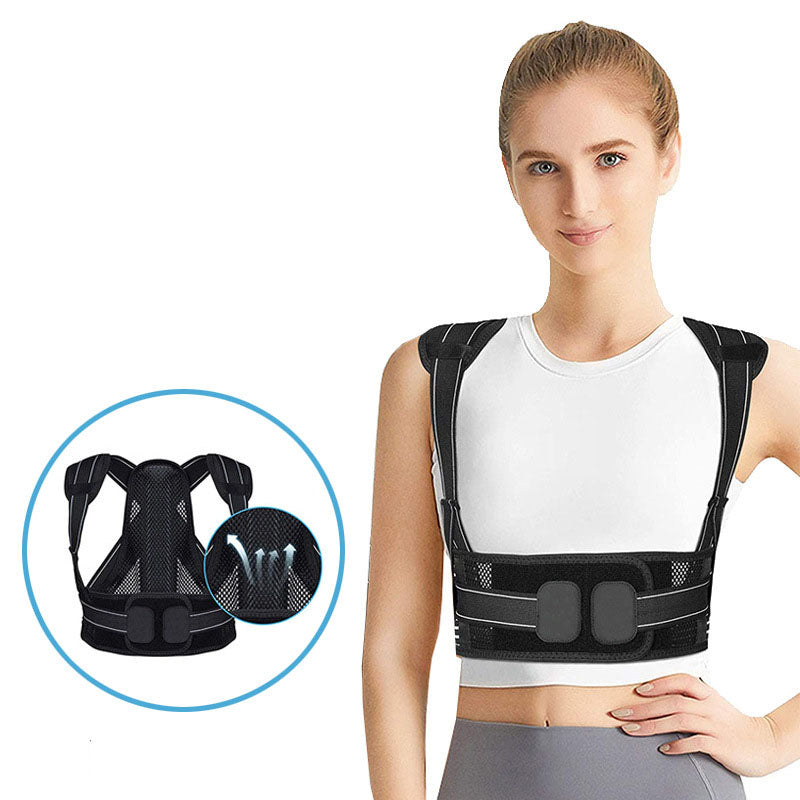
Why you need a back brace instead of an opioid
Share
You feel pain and pop the pill. It's a normal routine, isn't it? But have you ever thought that there might be a better way to find a lasting remedy for your back pain? Using back braces instead of opioids for chronic pain can significantly reduce pain.

Use back braces instead of opioids for chronic pain
During the opioid crisis in the United States, many studies have actually found that opioid drugs actually provide little short-term relief for back pain. For example, the JAMA study "Opioids are not better than nonopioids 9n Pain-related functional improvements, chronic low back pain intensity, hip / knee OA" surveyed 240 patients and found that opioid analgesics were effective. I found that there are few.
Participants suffering from chronic pain were divided into two groups, the first group receiving opioid medications and the second group receiving non-opioid medications. After 12 months, improvement in function and pain intensity was slightly better in the non-opioid group. The opioid-treated group also had an increased risk of side effects.
Why don't opioids provide more relief?
The definition of opioid states that it is an opium-like compound that binds to one or more of the body's three opioid receptors. When it binds to opioid receptors in the brain, spinal cord, and organs, it blocks pain signals and releases dopamine, so it is primarily used to treat severe pain. Many users experience relaxed heights as well as opioid addiction, as well as serious side effects.
Side effects of opioids:
- Nausea and vomiting
- constipation
- sleepiness
- insomnia
- dizzy
- Physical dependence
- Tolerance
- depression
As your body builds resistance to opioids over time, side effects may increase and the amount of pain that users experience over time may increase. Your body also needs more doses to build resistance to opioids, reduce their effects, and maintain their effects. This increased resistance can cause anxiety and sleep problems, and stresses the body as physical and mental healing requires sleep and relaxation.
How back braces can help
Instead of taking the risk with dangerous opioid medications, you may be relieved with back brace support. Wearing a device made of soft, supportive material should allow you to regain mobility without the use of mind-changing painkillers.
Whether or not you need a back brace for your back pain posture, you can find the one that best suits your individual needs, such as a back brace for work. In a professional environment, the use of braces can be safer than opioids, which can make you dazzled and unresponsive at work.
By providing hip support, the back brace improves functionality, reduces pain and allows the user to move around. They work by being placed on your hips with velcro straps that are attached to your side to apply compression to your abdominal and hip supports. The result is less pressure on the lower back, spine, ligaments, muscles and discs, healing and more stability.
Reasons for lower back braces range from injured disc hernias to age-related disc degeneration. Whatever the reason, consider getting a brace at the first sign of pain to stay active.
How to use the back brace properly:
1. Visit your doctor
See your doctor for fine-tuning and pain to get a proper diagnosis. With proper testing and procedures, doctors can identify the cause of pain, rule out serious conditions, and plan treatment. Your doctor will tell you if back bracing is an effective option.
2. Don't rely solely on braces
For back pain, understand that wearing a brace is just one of the steps needed to strengthen the core muscles to support the spine. You can rest assured with physiotherapy, stretching, yoga and light exercise.
3. Get the correct size
Finding a back brace that fits properly is important for comfort and support. Most braces can be adjusted to fit different shapes and sizes, but make sure your braces fit before you buy. See the size chart online or try it in the store.
4. Get your back brace through insurance
Back braces and other medical devices may be covered by insurance!
5. Do not overuse the brace
Wearing back braces for more than a few hours a day or more than two weeks will weaken your back muscles as your back begins to depend on the braces. Strengthening the core muscle is important for healing to avoid relying on back braces. Follow your doctor's instructions for use and daily exercise.
6. Take the time
Do not try to speed up the recovery process by chewing more than you can. With braces, you can't exceed physical limits. Repetitive movements, such as lifting heavy boxes and pulling weeds, can hurt your back again if you do not have enough force to return to these types of activities. Take the time to work with your physiotherapist to determine the strengths and limitations of rebuilding your core.
The information provided on the Aeroflow Healthcare blog is not a substitute for medical advice or care. Aeroflow Healthcare recommends that you consult your doctor if you have any medical problems or concerns.










